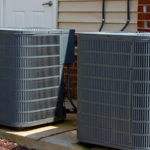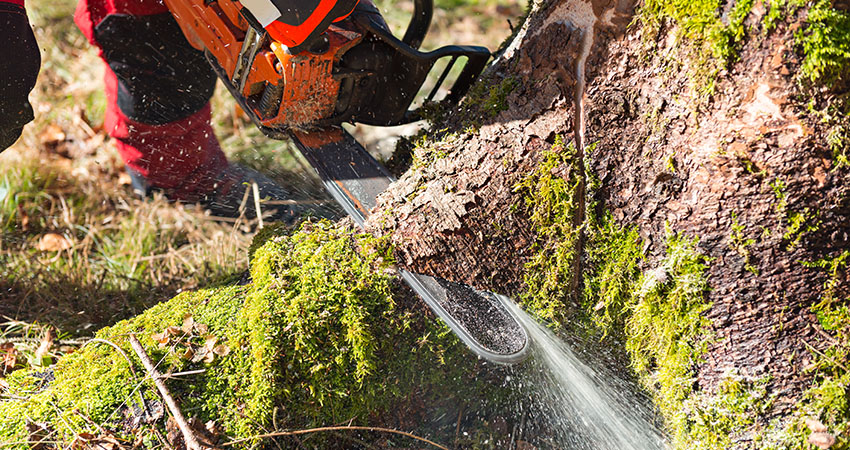Trees can get damaged by certain insects and they can fall victim to many diseases. These pests can also harm the trees in more ways than one so you should use the expertise of arborist services for spotting these pests and taking the next step as to carry out treatment or remove the tree. Here are some of the most common pests that can occur on trees.
Asian Longhorn Beetle
The Asian longhorn beetle is found in Korea, Japan, and China. It was isolated in this part of the peninsula, until it was discovered in the USA, Canada, Europe, and other places, in the late 1990s.
The Asian longhorn beetle is found on trees of oak, maple, and willow and they can damage the woody parts of the trees, by making holes in them and cutting off the nutrition supply from the roots, which in turn, can lead to severe damage and the ultimate death of the tree.
Forest Tent Caterpillar
Forest tent caterpillars attack fruit trees mostly, but they can also latch onto poplar trees, birch trees, oak trees, basswood trees, balsam trees, and more. It is usually found in different parts of the USA, as well as North America.
They can feed on the leaves, branches and even fruits of the trees and the evidence of damage is quite apparent. The forest tent caterpillar can be identified by its caterpillar-like body with distinct red and white dots. They are also quite fuzzy on the sides and that’s also one of the key distinguishing factors.
Aphids
Aphids are small green-colored ant-type insects that feed on the sap of the trees. Sap is a fluid that is responsible for the water and nutrient transport of the trees and these insects can suck it all out. This can cause a slimy, yellow liquid to be produced, called honeydew, which is extremely sticky and can attract fungus, yeast, and bacteria.
Once these agents latch onto the trees, it’s pretty much the end. It can cause weakening of the roots, falling of the leaves and branches, trunk problems, and ultimately, death of the tree.
Fall Webworm
Think of a fall webworm as a spider, but it’s a caterpillar and it weaves webs out of silk. These pests are found in warmer areas where the moisture level is high, so they thrive in humid climates. Their choice of trees are pecan trees, persimmon trees, fruit trees like apple and peach, and willow trees.
These worms usually attack the limbs and branches of trees first and you can see the signs of damage if there is a cluster of webs surrounding some part of the branch. Over time, fall webworms can defoliate many trees and make them lose their health and nutrition. Sometimes, you may even need to cut down the tree to prevent these pests from damaging other trees in your yard. This should be done carefully, so hire tree removal services Kensington.
Balsam Wooly Adelgid
This insect is usually found on fir trees. They are wingless pests that host and feed off trees and their branches. Once infested, the tree trunk can look like it has been covered in a grayish-white fuzz and that’s pretty much the point of no return for fir trees.
The tree, once infested, can start to develop deformed branches and leaves with holes and the woody parts of the trees can be susceptible to swelling. Younger and smaller branches can instantly get killed, while older branches can become weak and malnourished.
Eastern Pine Shoot Borer
The Eastern pine shoot borer is an insect that usually hosts pine trees and their shoots. Pine trees have long and protruded parts called shoots and if they start to lose their health and become yellow, then it means that there is some sort of pest infestation. Pine shoot borers usually attack the pine shoots during the warmer months from April to June.
A pine shoot borer looks like a small worm, while adult pine shoot borers can look like moths with wings and on them, there are huge yellow dots that distinguish this insect from the others. Once infested, this pest can spread its havoc pretty quickly, even if the trees are widely spaced out.
Douglas-Fir Bark Beetle
Douglas fir trees are under great danger, because of bark beetles. They are dark-colored, circular beetles that feast on the woody parts of a Douglas fir tree. These trees can get damaged pretty quickly because of this pest. The wood beetle is reddish brown with translucent wings and antennas on the side that replicate fuzz.
Once the bark beetle latches onto the Douglas fir tree, it starts to induce yeast and fungus production, which first, cuts down the nutrition supply of trees, and it ultimately leads to the death of the tree.
Gypsy Moth
The gypsy moth is probably one of the most common and dangerous pests out there. They can eat away the leaves of high-value trees and this pest can spread very quickly. It is found mostly in the eastern parts of the United States of America, and it can attack almost any kind of tree, like oak, birch, crabapple, aspen, willow trees, etc.
Gypsy moths look like long caterpillars with lots of antennas and they have spongy bodies. They can be found on the leaves and under them, during preliminary stages and then they can invade the entire tree in no time.
Tussock Moth
These moths can spread like no other pests. The tussock moths can attack almost any type of tree, but oak trees, old cypress trees, and cheery and hackberry trees are the most common ones that fall victim to this pest. This moth has 2 to 3 white dots on its body and it has green and red details on the side as well.
Along with that, there is a huge number of antennas on the body of this worm/moth. This moth is one of the few insects that can cause dermatitis in human beings as well.
Emerald Ash Borer
As the name suggests, this insect is emerald green in color and it looks like the smaller version of a grasshopper. This beetle is responsible for all kinds of damage to the ash trees. It is mainly found in the Asian parts of the world, but it can also infest trees in other areas. This beetle can dig up holes in the trees and that can cause a lot of tree wounds this action also attracts woodpeckers and they can inflict more damage to the already wilting tree.
If you see yellowing of the branches and leaves of ash trees, then it’s probably infested by the emerald ash borer and you need to get the tree checked before it’s too late.
Black Turpentine Beetle
Pine trees in the Southern part of the world are affected adversely by the turpentine beetle. This beetle is black and it is quite small, so it can be hard to identify, but if you see the damage, then you can narrow down the culprits.
The tree can have decent-sized exit holes in the branches and the base. Pitch tubes, of different textures, are also a common symptom of a defoliated pine tree.
Conclusion
Tree pests are very dangerous and they can spread pretty quickly too, in case the trees are in close vicinity. It’s good to spot them and treat them before things get out of hand. If they do, consult emergency tree services Bethesda.








